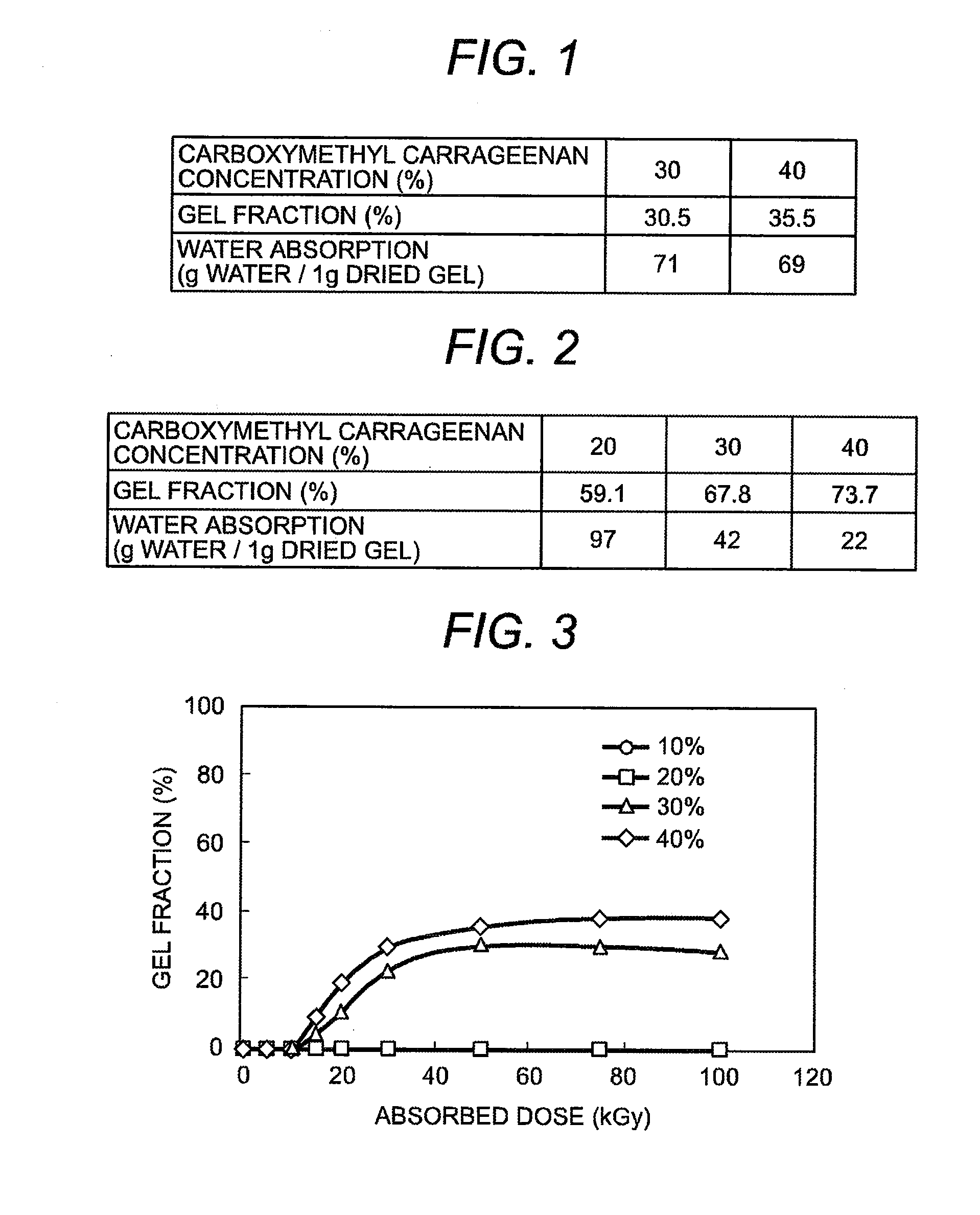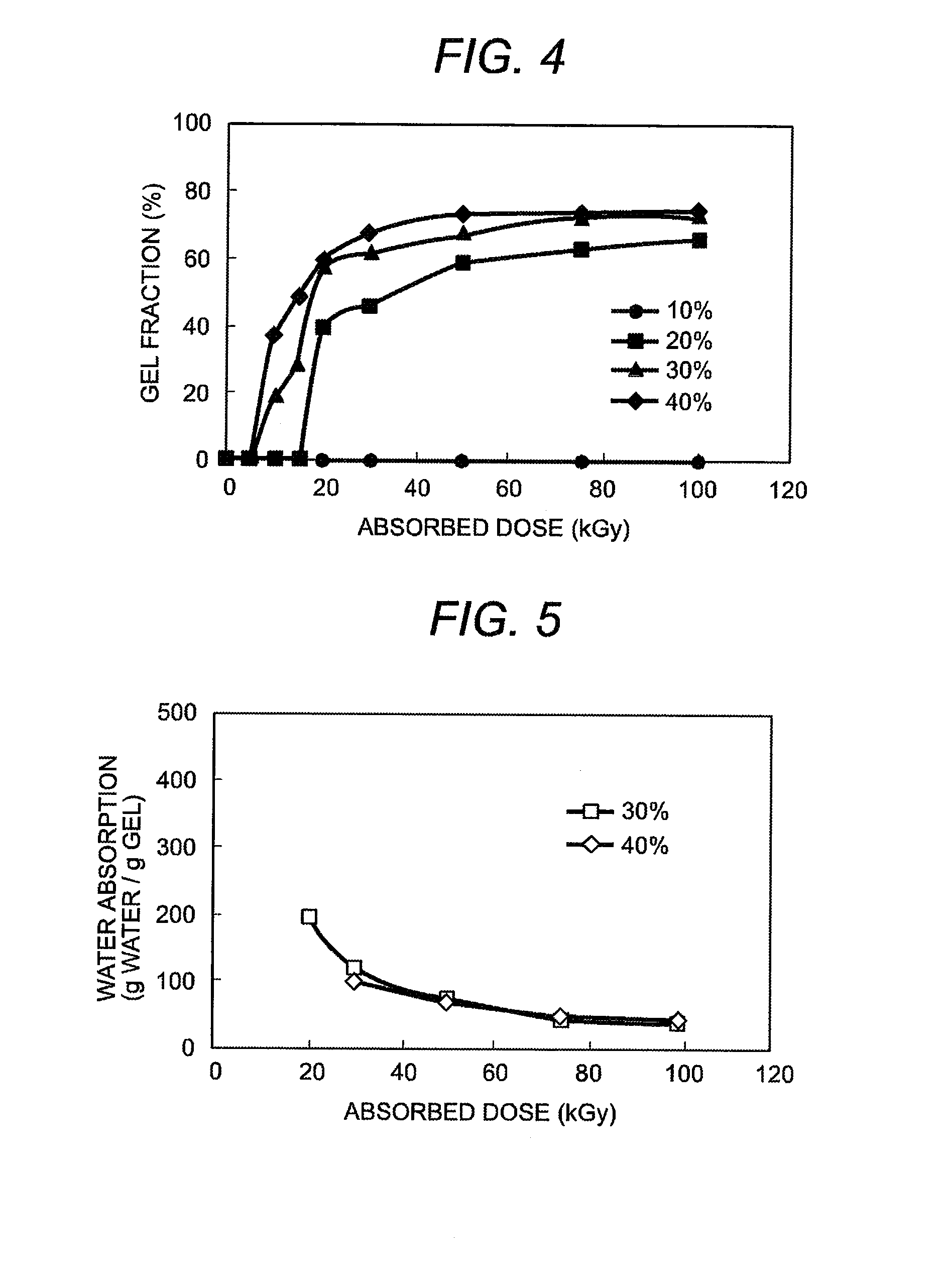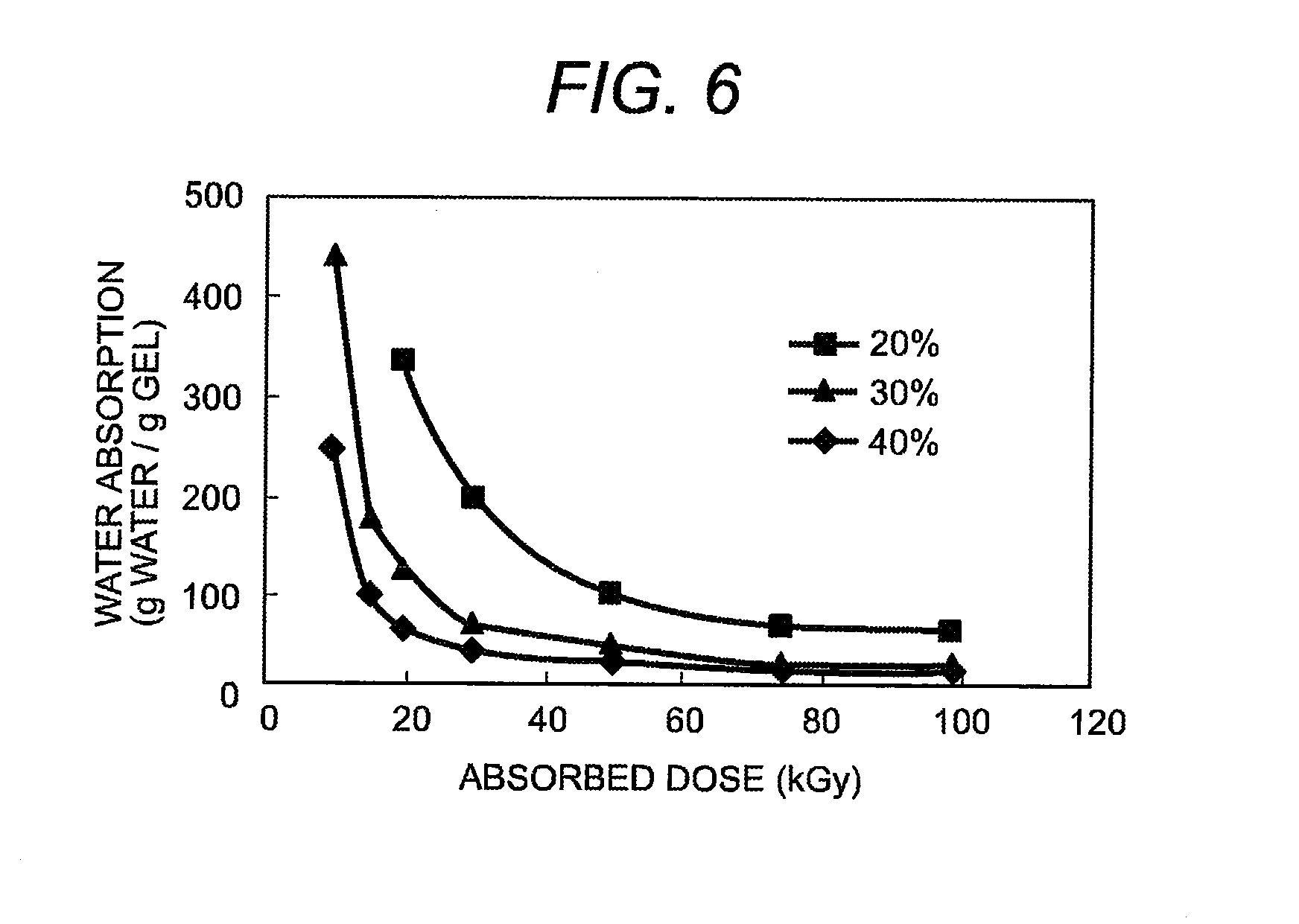Method of manufacturing gel using polysaccharides as raw materials
a polysaccharide and gel technology, applied in the direction of sugar derivates, organic chemistry, chemistry apparatus and processes, etc., can solve the problems of residual contamination of water absorbing materials, environmental pollution on a work site, dioxin generation and carbon dioxide generation, etc., to reduce environmental load, increase carbon dioxide, the effect of increasing the load
- Summary
- Abstract
- Description
- Claims
- Application Information
AI Technical Summary
Benefits of technology
Problems solved by technology
Method used
Image
Examples
embodiment 1
[0024]Embodiment 1 is explained referring to FIG. 1. FIG. 1 shows the relationship between gel fraction and water absorption when gamma-rays of 50 kGy are irradiated to carboxymethyl carrageenan solutions of various concentration to which one cycle process was performed. The 30% and 40% of samples of paste-state were made by kneading well the carboxymethyl carrageenan used in comparative example 1 with water, and gamma-rays of 50 kGy were irradiated. As understood clearly from FIG. 1, the crosslinking occurred to the carboxymethyl carrageenan by gamma-irradiation, and water insoluble gels were formed. Then, the water-absorbing hydrogels was obtained by soaking the gel to a large amount of water.
[0025]For the irradiation of gamma-rays of 50 kGy, when the concentration of the carboxymethyl carrageenan is 30%, the gel fraction was 30.5% and the water absorption of the obtained gel was 71 (g water / 1 g dry gel). When the concentration of the carboxymethyl carrageenan is 40%, the gel frac...
embodiment 2
[0026]Embodiment 2 is explained referring to FIG. 2. FIG. 2 shows the relationship between gel fraction and water absorption when gamma-ray of 50 kGy is irradiated to carboxymethyl carrageenan solutions of various concentration to which three cycle processes are performed. As for the carboxymethyl carrageenan used in embodiment 2, the reaction with monochloroacetic acid was carried out at 40° C. for 3 hours in the alkali environment (1 cycle). The carrageenan was carboxylated by repeating this cycle three times (3 cycles). The degree of substitution of the carboxymetyl group on carrageenan has increased more than that in embodiment 1. The 20%, 30%, and 40% of samples of paste-state were made by kneading well the carboxymethyl carrageenan used in comparative example 1 with water, and gamma-rays of 50 kGy were irradiated. As understood clearly from FIG. 2, the crosslinking occurred to the polymer of the carboxymethyl carrageenan by gamma-irradiation, and water insoluble gels were form...
embodiment 3
[0029]To investigate the properties of the carboxymethyl carrageenan gels more in detail, the inventors irradiate gamma-rays of 0-100 kGy to the paste samples of the concentration of 10%, 20%, 30% and 40% of carboxymethyl carrageenan, and examine gel fraction (%) and water absorption (g water / 1 g dry gel) of each carboxymethyl carrageenan gels. The results are graphed in FIGS. 3 to 6. FIG. 3 shows gel fraction when gamma-rays from 0 to 100 kGy are irradiated to paste samples of various concentrations to which one cycle process is performed. FIG. 4 shows gel fraction when gamma-rays from 0 to 100 kGy are irradiated to paste samples of various concentrations to which three cycle processes are performed. FIG. 5 shows water absorption when gamma-rays from 0 to 100 kGy are irradiated to paste samples of various concentrations to which one cycle process is performed. And, FIG. 6 shows gel fraction when gamma-rays from 0 to 100 kGy are irradiated to paste samples of various concentrations ...
PUM
| Property | Measurement | Unit |
|---|---|---|
| heat resistance | aaaaa | aaaaa |
| water absorption | aaaaa | aaaaa |
| water absorption | aaaaa | aaaaa |
Abstract
Description
Claims
Application Information
 Login to View More
Login to View More - R&D
- Intellectual Property
- Life Sciences
- Materials
- Tech Scout
- Unparalleled Data Quality
- Higher Quality Content
- 60% Fewer Hallucinations
Browse by: Latest US Patents, China's latest patents, Technical Efficacy Thesaurus, Application Domain, Technology Topic, Popular Technical Reports.
© 2025 PatSnap. All rights reserved.Legal|Privacy policy|Modern Slavery Act Transparency Statement|Sitemap|About US| Contact US: help@patsnap.com



